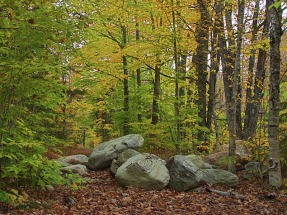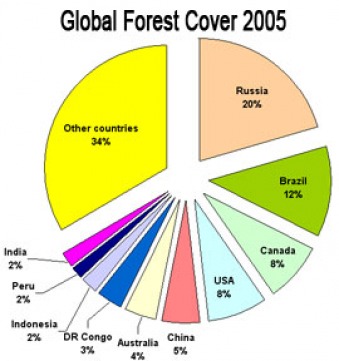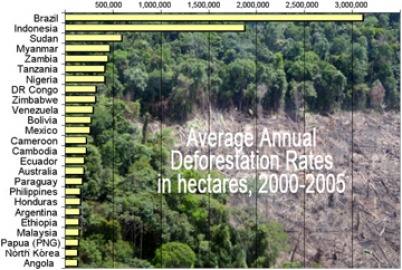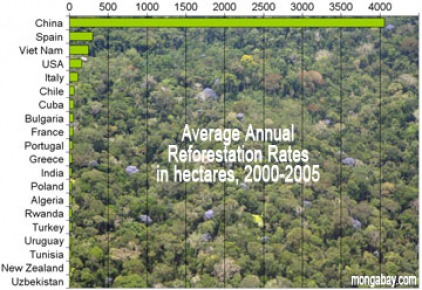Forest Sequestration Controversy: Old-Growth vs. Young-Growth Forests as Viable Carbon Offsets
What is Forest Sequestration?

In recent years, human activities have irrefutably emitted carbon dioxide (CO2) into the atmosphere. Rising CO2 levels ultimately warms the planet and will eventually lead to devastating effects to life on earth as we know it. In order to lower emission levels, humans need to make permanent changes to their lifestyles and methods of doing business. In the short term, however, many scientists have researched the carbon cycle to devise possible plans to capture CO2 from the atmosphere. A technique being explored and tested is by means of forest sequestration. It is a stable fact that forests around the world store large amounts of carbon within their tree trunks, roots, leaves, stems and other biomass associated with them, such as surrounding soils (USDA 2009). "Forest sequestration is the terrestrial removal of atmospheric carbon dioxide through the biological processes of plants and trees" (The Climate Trust 2010).
Global Forest Cover (2005)

Forest cover in 2005. Retrieved from: http://news.mongabay.com/2007/0313-forests.html
Forests play a vital role in the fight against climate change. They are the largest terrestrial store of carbon. Deforestation is has contributed to large amounts of carbon dioxide and other GHGs released into the atmosphere. Forests are cut down for logging and conversion to agricultural land. Deforestation and forest degradation occur at an alarming rate. Currently, according to WWF, "we lose over 32 million acres of tropical forest each year - the equivalent to 36 football fields a minute" (WWF Website).
Forests play a vital role in the fight against climate change. They are the largest terrestrial store of carbon. Deforestation is has contributed to large amounts of carbon dioxide and other GHGs released into the atmosphere. Forests are cut down for logging and conversion to agricultural land. Deforestation and forest degradation occur at an alarming rate. Currently, according to WWF, "we lose over 32 million acres of tropical forest each year - the equivalent to 36 football fields a minute" (WWF Website).

Average annual deforestation and reforestation between 2000 and 2005. By Rhett A. Butler, mongabay.com. Retrieved from:
http://news.mongabay.com/2007/0313-forests.html
Methods: Afforestation, Reforestation, and Forest Preservation
Forest sequestration has been implicated by carbon offset companies and government funded programs as a temporary solution to rising CO2 levels. The EPA claims that the carbon dioxide removed from the atmosphere through photosynthesis, exceeds plant respiration, and therefore will lower the CO2 level more and more each year (The Wilderness Society, 2007).
Many environmental scientists believe that restoring degraded land (Forest Preservation), replacing old-growth forests with young-growth forests (Reforestation), and planting forest plantations (Afforestation) are good approaches to offset human carbon dioxide emissions, and temporarily slow down rising atmospheric temperatures. For example, Ann Ingerson writes about how replacing old forests with new ones will speed carbon sequestration in her article funded by the Wilderness Society, “Since net biomass growth rates slow down in mature forests, keeping forests in a young, fast-growing state through short-rotation harvests would seem a reasonable strategy for enhancing carbon sequestration”. Ingerson also states in the preface of her paper, “Protecting the forests we have, replanting depleted landscapes, and managing forests for longer rotations and larger volumes of standing timber will all help ensure these critical wildlands play an ongoing role in climate change mitigation” (The Wilderness Society, 2007). Therefore, in theory, forest sequestration could be a good approach to capturing an abundant amount of carbon. The problem is that we do not know what factors could have effects on carbon sequestration levels.
Theories have surfaced regarding different types of forests having different sequestration rates. Most will argues that young-forest have higher sequestration rates than old-growth forests, however older forests already serve as large carbon sinks. Replacing these forests would result in carbon being released into the air. On the other hand, planting young-growth forests on already degraded land may help to lower global atmospheric carbon. However, problems arise here because scientists do not know for sure if planting trees on degraded land may have the ability to sequester carbon as quickly and effectively as a tree plantation for instance...or vice versa.
Many environmental scientists believe that restoring degraded land (Forest Preservation), replacing old-growth forests with young-growth forests (Reforestation), and planting forest plantations (Afforestation) are good approaches to offset human carbon dioxide emissions, and temporarily slow down rising atmospheric temperatures. For example, Ann Ingerson writes about how replacing old forests with new ones will speed carbon sequestration in her article funded by the Wilderness Society, “Since net biomass growth rates slow down in mature forests, keeping forests in a young, fast-growing state through short-rotation harvests would seem a reasonable strategy for enhancing carbon sequestration”. Ingerson also states in the preface of her paper, “Protecting the forests we have, replanting depleted landscapes, and managing forests for longer rotations and larger volumes of standing timber will all help ensure these critical wildlands play an ongoing role in climate change mitigation” (The Wilderness Society, 2007). Therefore, in theory, forest sequestration could be a good approach to capturing an abundant amount of carbon. The problem is that we do not know what factors could have effects on carbon sequestration levels.
Theories have surfaced regarding different types of forests having different sequestration rates. Most will argues that young-forest have higher sequestration rates than old-growth forests, however older forests already serve as large carbon sinks. Replacing these forests would result in carbon being released into the air. On the other hand, planting young-growth forests on already degraded land may help to lower global atmospheric carbon. However, problems arise here because scientists do not know for sure if planting trees on degraded land may have the ability to sequester carbon as quickly and effectively as a tree plantation for instance...or vice versa.

